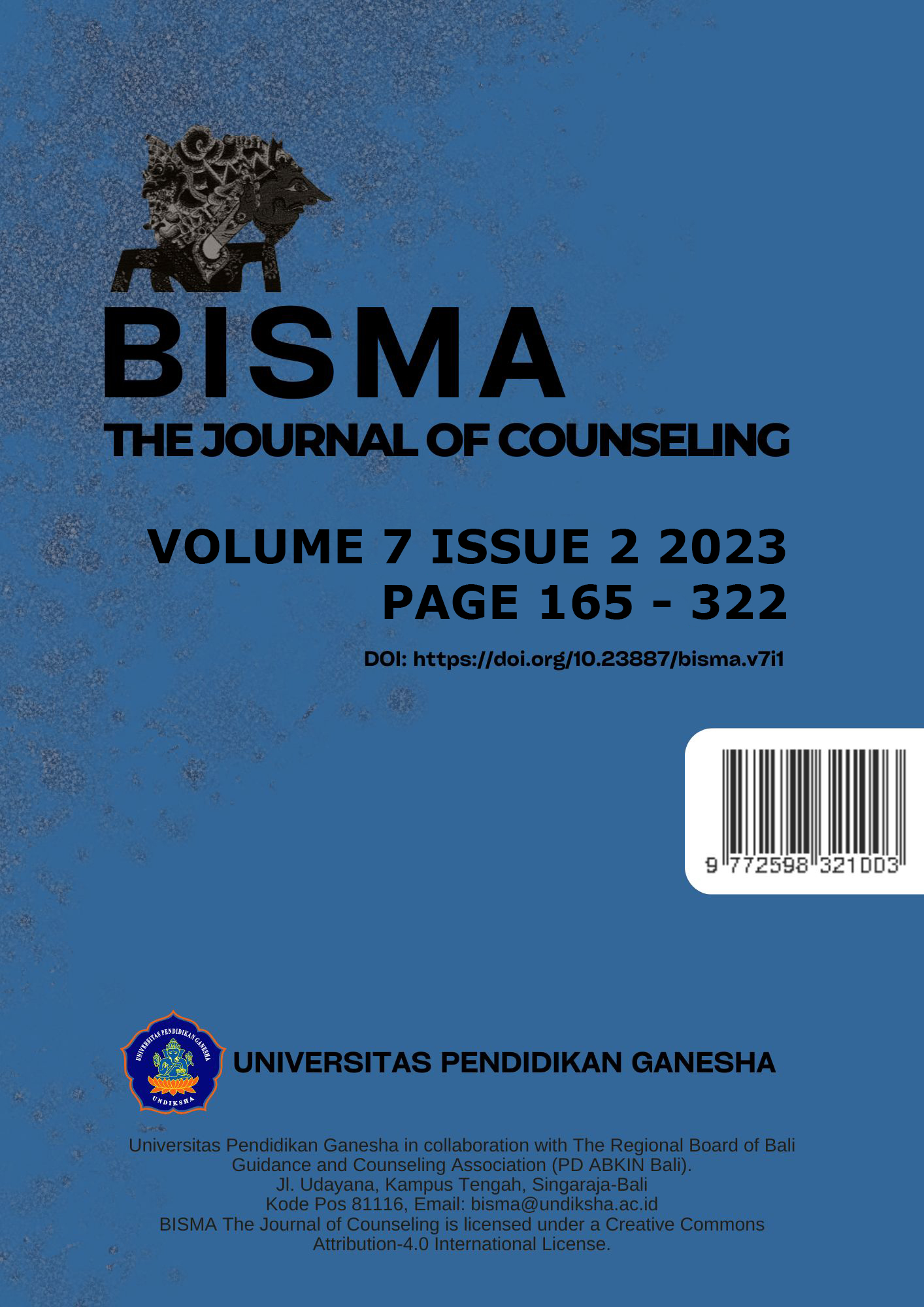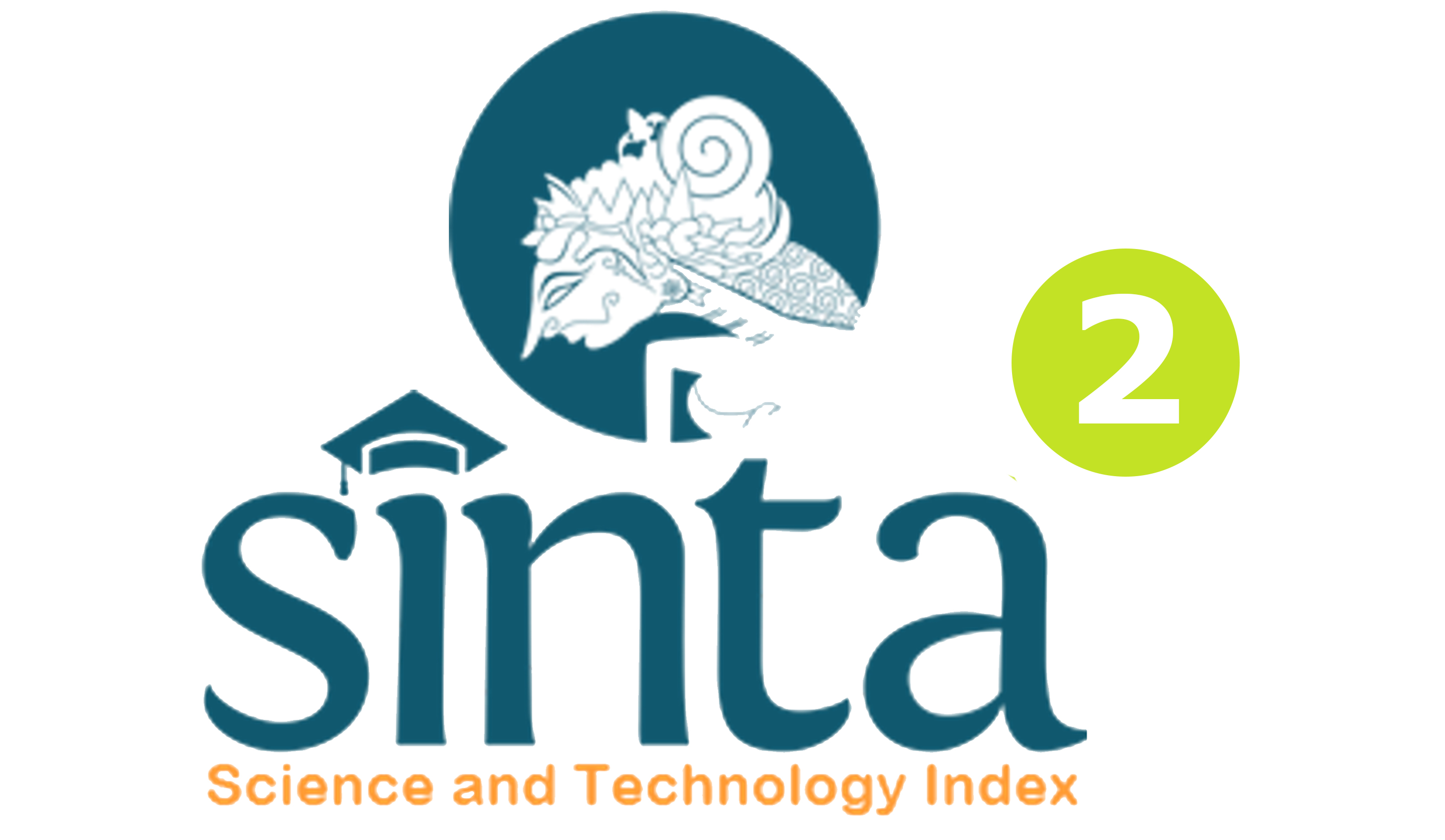Student Cyberloafing Behavior in the Learning Process: A Comparative Study
DOI:
https://doi.org/10.23887/bisma.v7i2.69326Keywords:
Cyberloafing, Learning, Guidance CounselingAbstract
Cyberloafing in the learning process is the behavior of using the internet during study hours for personal interests that are not related to learning. This needs to be addressed immediately because it will have an impact on decreasing motivation, concentration, achievement and even failure in learning. This study aims to analyze differences in cyberloafing based on gender and semester level. This research method is quantitative descriptive, comparative descriptive type with a factorial model design. The population in this study was 185 students of Islamic Education Guidance and Counseling, sampling using total sampling. The data collection tool used in this research is a cyberloafing scale with a Likert model scale of 45 valid statement items and the reliability level of the cyberloafing scale instrument has a Cronbach Alpha value of 0.742. The results of this study found that there was no significant difference in students' cyberloafing levels between men and women. There is a significant difference in the level of cyberloafing of students at semester levels II, IV and VI. There is an interaction between the variables gender and semester level in explaining student cyberloafing.
References
Ahmad, A., & Omar, Z. (2017). Age and gender differences in employee cyberloafing behavior. Ipsas UPM, 2(8). https://ipsas.upm.edu.my/dokumen/IISS_028_DrLateef.pdf.
Akbulut, Y., Dursun, Ö. Ö., Dönmez, O., & Şahin, Y. L. (2016). In search of a measure to investigate cyberloafing in educational settings. Computers in Human Behavior, 55, 616–625. https://doi.org/10.1016/j.chb.2015.11.002.
Akgün, F. (2020). Investigation of High School Students’ Cyberloafing Behaviors in Classes. Education & Science/Egitim ve Bilim, 45(201). https://pdfs.semanticscholar.org/a266/fd8d0bcc299c4753aa8c4a9ee22d4228c8c1.pdf.
APJII. (2022). APJII di Indonesia Digital Outlook 2022. Asosiasi Penyelenggara Jasa Internet Indonesia.
Churchill, N. (2020). Development of students ’ digital literacy skills through digital storytelling with mobile devices. Educational Media International, 00(00), 1–14. https://doi.org/10.1080/09523987.2020.1833680.
Çınar, O., & Karcıoğlu, F. (2015). The relationship between cyber loafing and organizational citizenship behavior: A survey study in Erzurum/Turkey. Procedia-Social and Behavioral Sciences, 207, 444–453. https://doi.org/10.1016/j.sbspro.2015.10.114.
Dereli, N., & İzmirli, Ö. Ş. (2022). Research on the cyberloafing levels of middle school students. Journal of Educational Technology and Online Learning, 5(4), 825–849. https://doi.org/10.31681/jetol.1146420.
Durak, H. Y. (2019). Cyberloafing in learning environments where online social networking sites are used as learning tools: antecedents and consequences. Journal of Educational Computing Research, 58(2), 539– 569. https://doi.org/10.1177/0735633119867766.
Fatimah, A. S., & Santiana, S. (2017). Teaching in 21St Century: Students-Teachers’ Perceptions of Technology Use in the Classroom. Script Journal: Journal of Linguistic and English Teaching, 2(2), 125. https://doi.org/10.24903/sj.v2i2.132.
Grashinta, A., Gentary, A., & Syihab, A. (2022). Stres dan Prokrastinasi Akademik pada Mahasiswa Pelaku Cyberslacking. Jurnal Ilmiah Psikologi MIND SET, 13(02), 176–188. https://doi.org/10.35814/mindset.v13i02.4271.
Hamrat, N., Hidayat, D. R., & Sumantri, M. S. (2019). Dampak stres akademik dan cyberloafing terhadap kecanduan smartphone. Jurnal EDUCATIO: Jurnal Pendidikan Indonesia, 5(1), 13–19. https://doi.org/10.29210/120192324.
Heflin, H., Shewmaker, J., & Nguyen, J. (2017). Impact of mobile technology on student attitudes, engagement, and learning. Computers & Education, 107, 91–99. https://doi.org/10.1016/j.compedu.2017.01.006.
Hensel, P. G., & Kacprzak, A. (2021). Curbing cyberloafing: studying general and specific deterrence effects with field evidence. European Journal of Information Systems, 30(2), 219–235. https://doi.org/10.1080/0960085X.2020.1756701.
Irving, K. E. (2006). The impact of technology on the 21st century. Teaching Science in the 21st Century, March 1981, 3–19. https://cmapsconverted.ihmc.us/rid=1JVHR9TKT-1VMCFZP-SHW/21st century.pdf.
Jia, H., Jia, R., & Karau, S. (2013). Cyberloafing and personality: The impact of the big five traits and workplace situational factors. Journal of Leadership & Organizational Studies, 20(3), 358–365. https://doi.org/Jia, H., Jia, R., & Karau, S. (2013). Cyberloafing and personality: The impact of the big five traits and workplace situational factors. Journal of Leadership & Organizational Studies, 20(3), 358–365.
Kurt, R. (2019). Industry 4.0 in Terms of Industrial Relations and Its Impacts on Labour Life. Procedia Computer Science, 158, 590–601. https://doi.org/10.1016/j.procs.2019.09.093.
Leung, L. (2014). Predicting Internet risks: a longitudinal panel study of gratifications-sought, Internet addiction symptoms, and social media use among children and adolescents. Health Psychology and Behavioral Medicine, 2(1), 424–439. https://doi.org/10.1080/21642850.2014.902316.
Lim, V. K. G., & Chen, D. J. Q. (2012). Cyberloafing at the workplace: gain or drain on work? Behaviour & Information Technology, 31(4), 343–353. https://doi.org/10.1080/01449290903353054.
Manusakerti, G. A., & Purwoko, B. U. D. I. (2020). Teknik Self-Control Dalam Konseling Kelompok untuk Mengurangi Perilaku Cyberloafing pada Peserta Didik di SMA Negeri 5 Madiun. Jurnal BK UNESA, 11(4). https://ejournal.unesa.ac.id/index.php/jurnal-bk-unesa/article/view/33751.
McCusker, K., & Gunaydin, S. (2015). Research using qualitative, quantitative or mixed methods and choice based on the research. Perfusion (United Kingdom, 30(7), 537– 542. https://doi.org/10.1177/0267659114559116.
Nuha, M. U. (2021). Pengaruh stres akademik dan kontrol diri terhadap perilaku cyberloafing pada mahasiswa psikologi islam iain salatiga. Jurnal Walisongo, 6. https://eprints.walisongo.ac.id/13528/1/1707016114_Muhammad Ulin Nuha_Full Skripsi.pdf.
Özcan, S., Gökçearslan, Ş., & Yüksel, A. O. (2017). An investigation of the relationship between cyberloafing and academic motivation among university students. Küreselleşen Dünyada Eğitim, 52, 733–742. https://doi.org/10.14527/9786053188407.52.
Özkalp, E., Aydın, U., & Tekeli, S. (2012). Sapkın örgütsel davranışlar ve çalışma yaşamında yeni bir olgu: Sanal kaytarma (cyberloafing) ve iş ilişkilerine etkileri. Çimento İşveren Sendikası Dergisi, 26(2), 18–33. https://acikerisim.uludag.edu.tr/handle/11452/7279.
Ozler, D. E., & Polat, G. (2012). Cyberloafing phenomenon in organizations: Determinants and impacts. International Journal of EBusiness and EGovernment Studies, 4(2), 1–15. https://dergipark.org.tr/en/pub/ijebeg/issue/26199/275855.
Potter, W. J. (2018). An analysis of patterns of design decisions in recent media effects research. Review of Communication Research, 6, 1–29. https://doi.org/10.12840/issn.2255-4165.2018.06.01.014.
Pranitasari, d, Afifah, N., Prastuti, D., Hermastuti, P., Syamsuar, G., & Suryono, d w. (2023). self control, self awareness dan kejenuhan belajar pada perilaku cyberloafing mahasiswa dalam pembelajaran daring. Media Manajemen Jasa, 11(1), 56–68. https://doi.org/10.52447/mmj.v11i1.6978.
Ravizza, S. M., Hambrick, D. Z., & Fenn, K. M. (2014). Non-academic internet use in the classroom is negatively related to classroom learning regardless of intellectual ability. Computers & Education, 78(9), 109–114. https://doi.org/10.1016/j.compedu.2014.05.007.
Restubog, S. L. D., Garcia, P. R. J. M., Toledano, L. S., Amarnani, R. K., Tolentino, L. R., & Tang, R. L. (2011). Yielding to (cyber)-temptation: Exploring the buffering role of self-control in the relationship between organizational justice and cyberloafing behavior in the workplace. Journal of Research in Personality, 45(2), 247–251. https://doi.org/10.1016/j.jrp.2011.01.006.
Samerkhanova, E. K., & Imzharova, Z. U. (2018). Organizational and pedagogical conditions for forming the readiness of future teachers for project activities in the context of Digitalization of education. Vestnik of Minin University, 6(2). https://doi.org/10.26795/2307-1281-2018-6-2-2.
Saritepeci, M. (2019). Predictors of cyberloafing among high school students: Unauthorized access to school network, metacognitive awareness and smartphone addiction. Education and Information Technologies, 25(3), 2201–2219. https://doi.org/10.1007/s10639-019-10042-0.
Setiawardhani, R. T. (2013). Pembelajaran elektronik (e-learning) dan internet dalam rangka mengoptimalkan kreativitas belajar siswa. Jurnal Ilmiah Pendidikan Ekonomi Unswagati, 1(2), 82–96. http://fkip-unswagati.ac.id/ejournal/index.php/edunomic/article/download/21/20.
Sjahruddin, H., Ramli, M., Anaconda Bangkara, B., & Fatmawati, E. (2022). Technological Innovation to Support 21st Century Learning Outcomes and Sustainability at Universitas Islam Negeri (UIN) Antasari. Jurnal Iqra’ : Kajian Ilmu Pendidikan, 7(1), 63–76. https://doi.org/10.25217/ji.v7i1.1473.
Toker, S., & Baturay, M. H. (2021). Factors affecting cyberloafing in computer laboratory teaching settings. International Journal of Educational Technology in Higher Education, 18, 1–24. https://doi.org/10.1186/s41239-021-00250-5.
Vitak, J., Crouse, J., & LaRouse, R. (2011). Personal Internet use at work: Understanding cyberslacking. Computers in Human Behavior, 27, 1751–1759. https://doi.org/10.1016/j.chb.2011.03.002.
Wisdom, J., & Creswell, J. W. (2013). Integrating quantitative and qualitative data collection and analysis while studying patientcentered medical home models. In Agency for Healthcare Reseach andQuality (pp. 1– 5).
Yaşar, S., & Yurdugül, H. (2013). The investigation of relation between cyberloafing activities and cyberloafing behaviors in higher education. Procedia-Social and Behavioral Sciences, 83(6), 600–604. https://doi.org/10.1016/j.sbspro.2013.06.114.
Yusuf, M. (2016). Metode Penelitian Kuantitatif, Kualitatif & Penelitian Gabungan.
Zhampeissova, K., Alena, G., Ekaterina, V., & Zhanna, E. (2020). “Academic Performance and Cognitive Load in Mobile Learning.” International Journal of Interactive Mobile Technologies, 14(21), 78–91,. https://doi.org/10.3991/ijim.v14i21.18439.
Downloads
Published
Issue
Section
License
Copyright (c) 2023 suci habibah suci

This work is licensed under a Creative Commons Attribution 4.0 International License.








